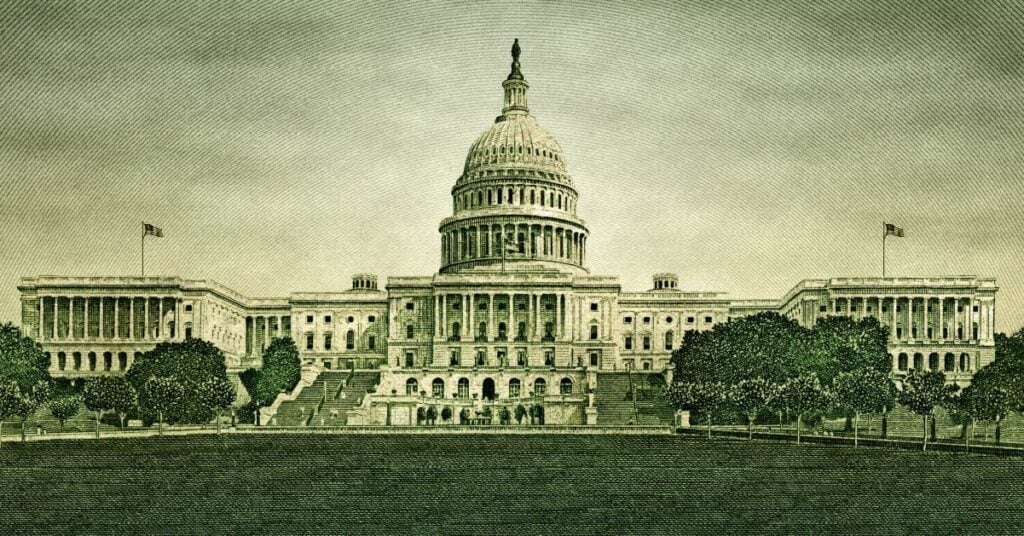The House-passed tax plan includes more than 100 provisions, many of which could alter state tax policy and harm state budgets. This post covers five particularly notable provisions for states: increasing deductions for state and local taxes (SALT) paid, allowing more generous tax write-offs for businesses, offering new avenues for capital gains tax avoidance to people contributing to private school voucher funds, carving tips and overtime out of the tax base, and re-upping Opportunity Zone tax breaks for wealthy investors.
SALT Deduction
The House tax bill would extend the federal government’s temporary cap on SALT deductions as a way of partly offsetting some of the costs of cutting taxes for high-income earners and highly profitable businesses. The cap would, however, be set noticeably higher than the one states have become accustomed to in recent years: $40,000 in 2026, up from $10,000 in 2025 (with the higher cap phasing out for married couples with incomes above $500,000).
As we highlighted in a recent brief, states should chart their own course rather than go along with the federal push to increase the amount of SALT that filers can write off. When the Tax Cuts and Jobs Act of 2017 (TCJA) first implemented the $10,000 SALT cap, 18 states went along with the change and included the cap in their own income taxes. This was clearly a step in the right direction, bolstering budgets by reducing tax breaks that mostly benefit filers with high incomes and expensive homes.
If the federal SALT cap is extended at a much higher level than is the case today, adopting that change at the state level would be a step backward for the 18 states that would be impacted by the higher federal cap. These states – as well as those that have not adopted the federal cap – should solidify the $10,000 cap in their tax codes by decoupling from further federal changes or strengthen limits on this and other deductions. Failing to do so would primarily benefit wealthy households who are already likely to receive a major windfall from the regressive tax legislation working its way through Congress.
Depreciation
Companies have long been able to deduct the costs of equipment more quickly than it wears out through a mechanism known as accelerated depreciation. The 2017 tax law expanded that provision and created what is known as “bonus depreciation,” which allows businesses to write off the entire cost of equipment in the year it was purchased. This policy has expired, but the House-passed tax plan would bring it back for four years (and several Senators are angling to restore it permanently in their version of the bill).
As a result of this expanded corporate tax break, the U.S. doled out almost $67 billion in tax breaks to the 25 profitable corporations that benefitted the most over the first five years the provision was in effect (2018-2022).
While bonus depreciation is billed as a way to encourage investment, there’s little evidence that it has had this effect. It’s more likely to provide a windfall to companies for investments that would have occurred anyway or, at most, to cause companies to change the timing of their capital investments. At the state level, the case for bonus depreciation is even weaker because there are no guarantees that the investments benefiting from this tax break will even be based in the state offering the tax cut.
We estimate a 10-year, $66 billion federal revenue loss under the bonus depreciation extension included in House-passed tax plan. The effects, however, could also reach states that have not already decoupled from the relevant portions of the federal tax code. The forgone revenue for states would be significant.
Private School Vouchers
As we highlighted in a recent brief, the House-passed tax plan would grant extraordinarily generous treatment to nonprofits that give out vouchers for free or reduced tuition at private K-12 schools. It would pay out an unprecedented 100 percent, dollar-for-dollar tax credit to people who “donate” to private school voucher groups. “Donors” would be reimbursed in full for their donations, up to a maximum of $5 billion nationwide each year. In effect, the policy privileges the cause of private K-12 school vouchers over other causes, such as supporting wounded veterans or helping victims of natural disasters.
This provision would also sap federal and state revenue by facilitating new forms of capital gains tax avoidance.
That’s because private school voucher donors could avoid capital gains tax on their gifts of corporate stock, essentially making a contribution to a voucher group more profitable than a stock sale to a regular buyer. The upshot is that the bill facilitates capital gains tax avoidance as a way of motivating wealthy families to act as middlemen in moving public funds into private schools. This would reduce both federal and state revenues through reductions in reported capital gains income.
We estimate that state revenue would decline by $459 million over the next decade as a result of the bill as written, or by $1.1 billion over the decade if the federal credit remains on the books past its four-year expiration date, as proponents hope. The largest revenue losses would largely be concentrated in states that do not offer private K-12 school vouchers today (see Figure 3).
Overtime and Tips
Tipped and overtime income would receive special treatment relative to other kinds of earnings under the House-passed tax plan. These policies are being touted as tax relief for the working class but will do nothing for most low- and moderate-wage workers. Few workers receive tips or consistently work overtime, and those with the lowest wages already pay little federal income tax and therefore would not benefit from these exemptions.
Past experience suggests that singling out certain forms of income for special treatment will cause businesses and taxpayers to search for creative ways to take advantage of the preference. For instance, employers may seek to reclassify wage income as tips or push consumers to tip more generously so that they can cut wages. Similarly, the overtime provision could spur employers to offer lower base pay and more aggressively encourage overtime work to shift more of their employees’ wages into the tax-free category. Fraudulent reporting is another potential concern.
In addition to the inequities, there is the cost. The few states who base their tax codes on the federal definition of taxable income will automatically lose revenue, but many more will undoubtedly feel pressure to enact parallel measures at great cost. Alabama’s experience exempting overtime pay from its income tax is instructive. Despite initial estimates predicting a cost of $34 million a year, the true price tag amounted to $230 million a year.
Exempting overtime and tips from state income tax would be distortionary, inequitable, and costly to state budgets—with minimal, if any, upside for underpaid workers seeking economic security.
Opportunity Zones
The Opportunity Zones program (OZ), first created by the 2017 Trump tax law, allows lucrative tax breaks for people who invest in areas designated as “distressed.” The stated intent was to benefit people in low-income areas by allowing investors to avoid taxes on capital gains in these designated areas, with the idea being that this would incentivize private investment.
The program, however, has been plagued by a number of problems such as:
- the areas were poorly targeted and often based on existing trends rather than community need, so many of these investments would have been made regardless of OZ status
- the subsidies have helped fund projects that cater to wealthier households such as luxury condos and data centers rather than essential services for long-term residents
- the federal regulations governing OZ investments are weak and lack sufficient oversight
- investors can sometimes benefit from activity occurring outside of the designated zones
While a handful of states have chosen to fully or partly decouple from the federal OZ program, the vast majority of states pile onto the OZ program’s tax subsidies by fully conforming to the program.
Under current law, the tax benefits and OZ designations are slated to expire at the end of 2026, effectively concluding the program. Instead of letting the program expire, the House tax bill would extend Opportunity Zones for an additional seven years until 2033. OZ 2.0, as it’s called, has been framed as making the program more inclusive and rural-focused (one-third of the new designations must be in rural areas) but the House has preserved the core structure of OZ that disproportionately benefits wealthy investors while doing little for truly distressed communities.
Opportunity Zones have already cost billions in lost federal and state revenue. Extending them will lock in another seven years of revenue loss. States should decouple from this program and look for more meaningful ways to invest in underserved and distressed communities.
In summary, many of the provisions in the legislation passed by the House would impact not just federal tax law but state law as well. State lawmakers should be thoughtful in deciding the extent to which they will follow the federal government’s lead when it comes to some of the more problematic policies outlined above.









